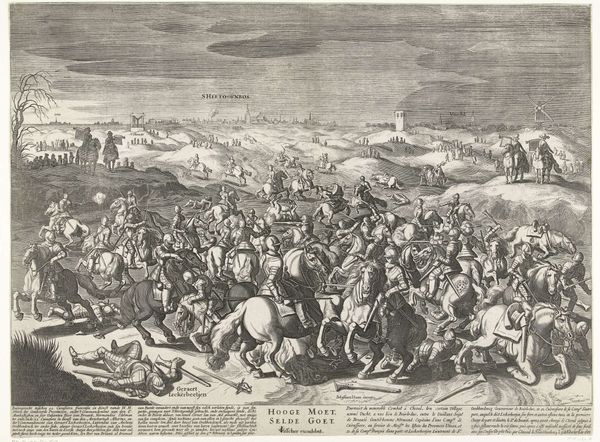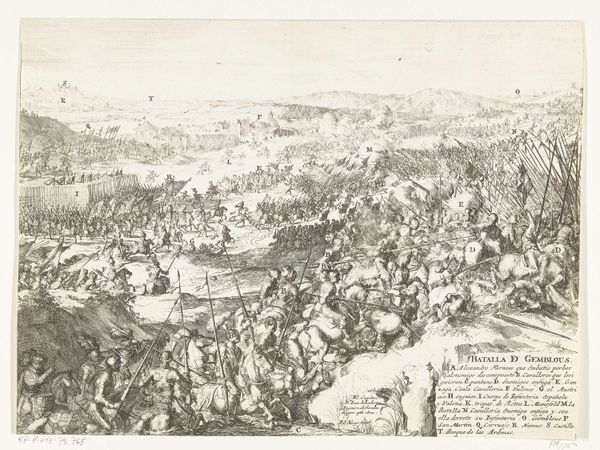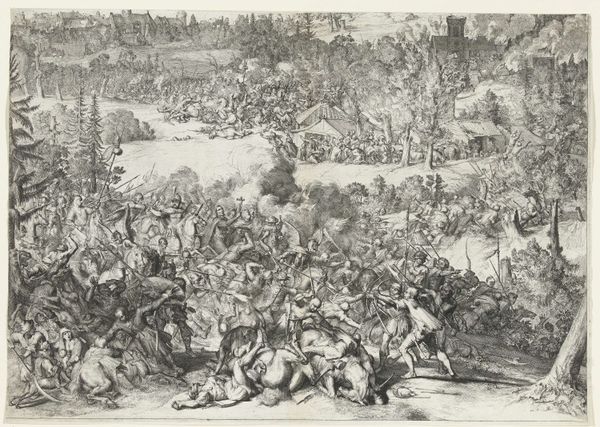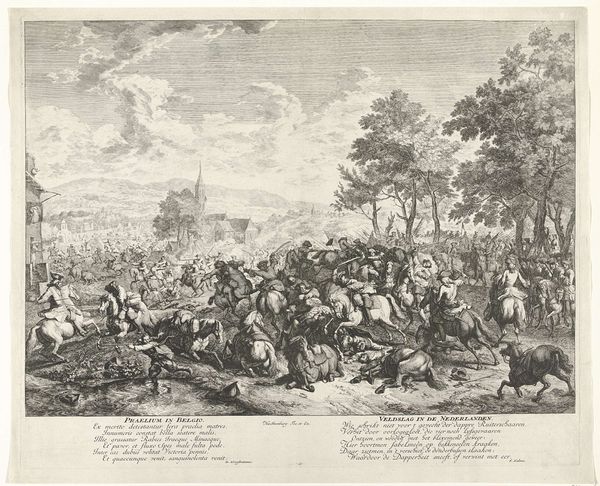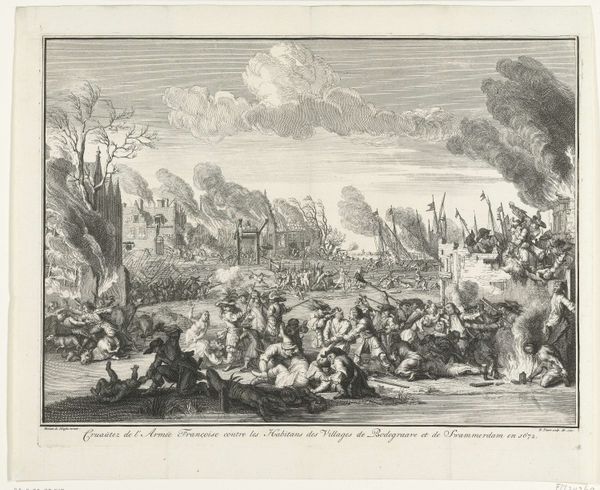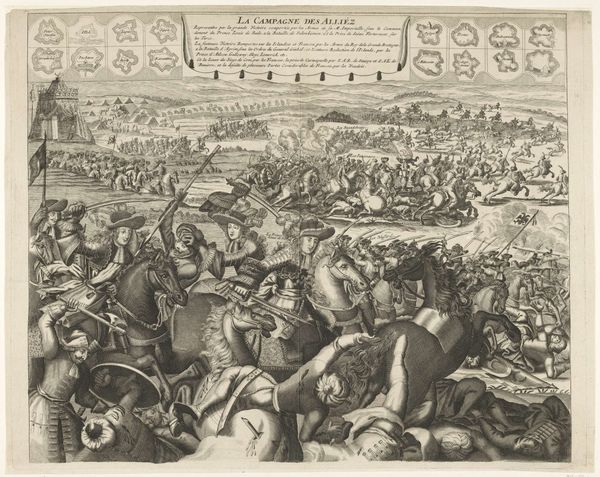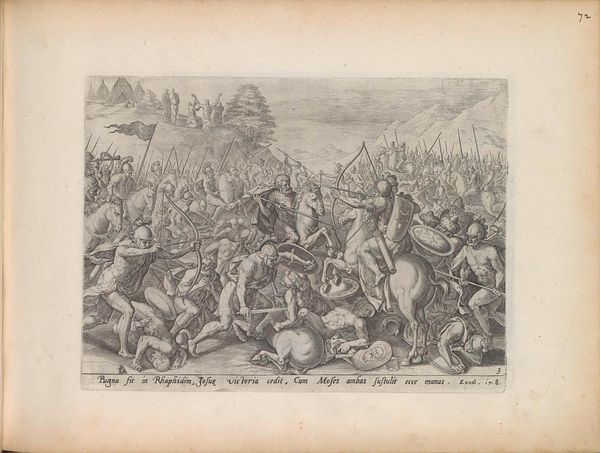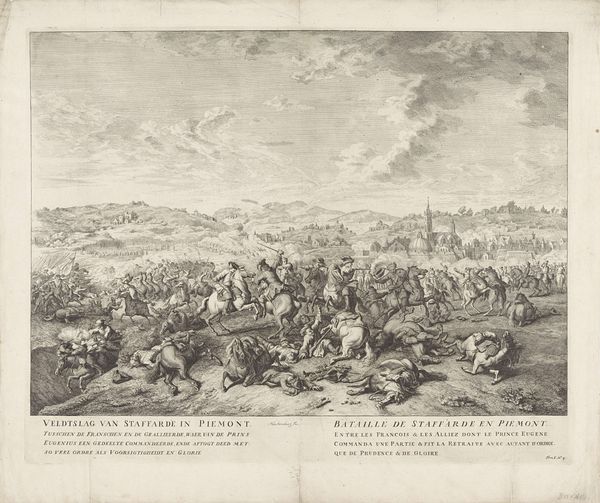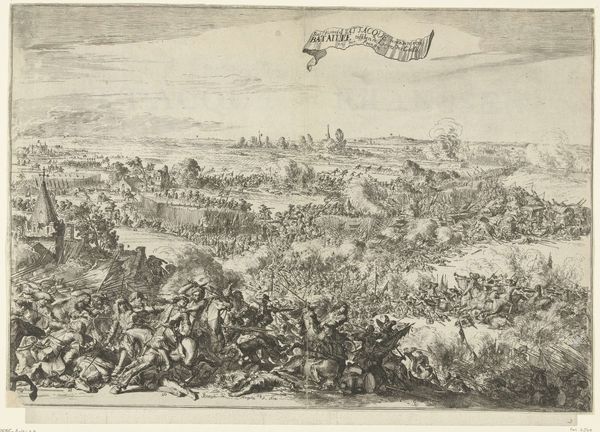
print, engraving
#
ink drawing
#
baroque
#
pen drawing
# print
#
landscape
#
figuration
#
line
#
history-painting
#
engraving
Dimensions: height 245 mm, width 362 mm
Copyright: Rijks Museum: Open Domain
Editor: This is "Slag bij Straatsburg, 357," or "Battle of Strasbourg, 357," created in 1692 by Romeyn de Hooghe. It's a print; an engraving rendered in ink. The chaotic energy really jumps out – all those clashing figures. What can you tell us about this depiction? Curator: Well, looking at this through a historical lens, it's fascinating how de Hooghe is participating in constructing a historical narrative. Prints like these were vital tools for disseminating information and shaping public opinion, especially regarding historical events and battles. This purports to depict the Battle of Strasbourg in 357 AD, but of course it's created in the 17th century. Think about what that temporal distance implies. Editor: So, it's not really about historical accuracy then? More about something else? Curator: Exactly. It’s about legitimizing power, crafting national identity, and instilling a sense of historical continuity. Look at the composition – how are the victors and the defeated portrayed? Who are meant to identify with, and why? The choice of the battle itself might reflect contemporary political concerns of the artist's time, dressed up in the guise of ancient history. It is important to also notice where this piece would have been shown and what meaning the venue brought to its perception. Editor: That makes sense. The artist isn’t just illustrating an event, they are trying to make a statement about power dynamics and contemporary politics. Were these kinds of historical prints commonly displayed? Curator: Absolutely, prints were a popular and affordable art form that was displayed in public places, homes, and used as educational tools. They helped shape historical consciousness among a wide audience. What do you make of the level of detail, and how it might play into its public reception? Editor: It’s incredible! But all the small figures might be difficult to read. I guess I assumed accuracy was paramount. Curator: What appears accurate isn’t always truthful. Editor: Right. I hadn’t considered the political implications. Now I’m seeing it as more of a persuasive argument than a simple depiction of a battle. Thanks for opening my eyes.
Comments
No comments
Be the first to comment and join the conversation on the ultimate creative platform.
